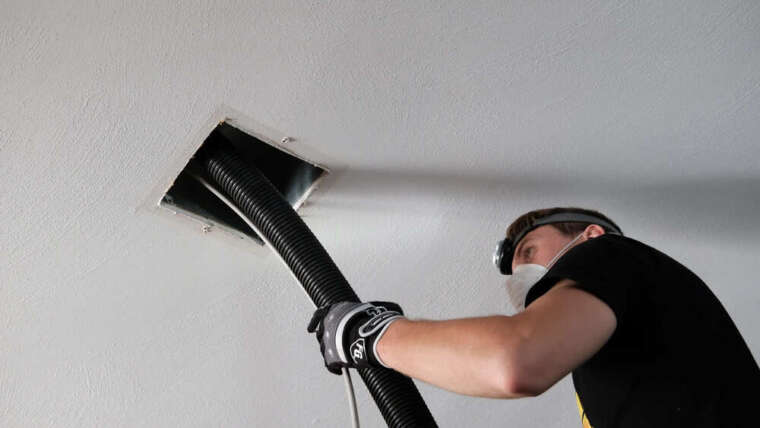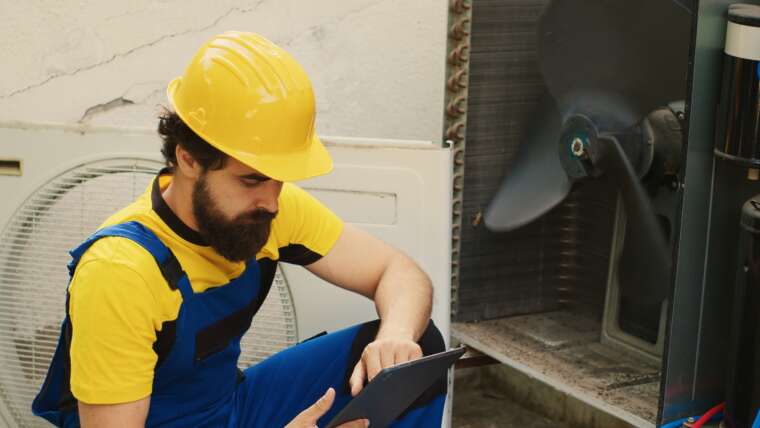Our pets are part of the family, but if you’re sneezing more than snuggling, there’s a hidden issue you might not be thinking about: your air ducts. If you’ve ever wondered why allergies seem worse indoors, or why your HVAC system smells a bit musty, it could be a case of pet allergens and dirty air ducts teaming up to make life uncomfortable.
This isn’t just about a few stray hairs—it’s about dander, microscopic allergen particles, and how your home’s air circulation can either trap them… or send them floating into every room. Let’s break it down and talk about how dirty ducts, pet dander, and HVAC maintenance are deeply connected—and what you can do to breathe easier.

Why Pet Owners Should Pay Attention to Their Ductwork
Pet dander, hair, saliva, and even skin flakes are all allergenic. These tiny particles can cling to surfaces, float in the air, and most importantly—get sucked into your HVAC system. Once inside, they’re circulated through your vents repeatedly, especially when the ductwork hasn’t been cleaned in years.
Over time, dander builds up along duct walls, gets caught in filters, and settles in your air vents. This creates a perfect storm for people with allergies to dogs and air ducts that haven’t been maintained. Even people without known pet allergies can start experiencing breathing issues or chronic coughing due to poor indoor air quality.
How Dirty Ducts Amplify Pet Allergens
Here’s where it gets tricky. Most people assume vacuuming and brushing their pets regularly is enough. While that certainly helps reduce allergens in the home, if your air ducts are dirty, they’re acting like a distribution system for everything you’re trying to eliminate.
Pet allergens that have settled in the ducts are constantly stirred up whenever your HVAC system runs. Every time your AC or heat kicks in, those particles are pushed through the vents and into your living space.
If you have a cat allergy, for instance, but your home once had a cat, you may still be reacting even if the animal is gone. This is especially true if the previous owner didn’t replace or clean the ductwork. In some cases, it may even be necessary to replace air ducts under the house if the contamination is extensive.

Signs Your Pet May Be Impacting Indoor Air Quality
How can you tell if your pet’s presence is affecting your HVAC system and your air quality?
- You experience allergy flare-ups more often indoors
- There’s a musty, “animal” smell when the HVAC runs
- You notice visible dust or hair near vent openings
- HVAC filters clog quickly, even after recent replacement
- Your pet scratches frequently—airborne allergens can affect them too
These are classic signs that your ducts need attention. Dirty ducts can become breeding grounds for mold and bacteria, which only worsens the issue. This makes HVAC mold removal and HVAC sanitizing essential steps in restoring a clean airflow system.
The Role of HVAC Filters and Sanitizing Systems
Your HVAC filter is the first line of defense against airborne allergens. But if you’re not changing it regularly—or using the wrong type—it’s probably not catching enough pet dander to make a difference.
For homes with pets, consider more frequent HVAC air filter replacement, ideally every 1–2 months. You may also want to upgrade to a high-efficiency filter designed to trap microscopic particles.
In addition, HVAC UV light installation can help neutralize allergens and bacteria as air moves through your system. UV lights don’t just improve air quality—they also prevent mold and biofilm from forming inside your ducts and coils.
The Danger of Long-Term Allergen Buildup
If left untreated, allergens in your ductwork can lead to more serious issues than just sneezing.
- Mold growth thrives on dust and dander buildup
- Your HVAC system works harder, lowering efficiency and increasing bills
- Allergens can damage respiratory health over time
- Ductwork may become permanently contaminated
Once pet dander and dust get deep into the system, especially in hard-to-reach spots, it becomes difficult to remove with surface cleaning alone. This is where residential air duct cleaning becomes critical.
It’s not just about improving comfort—it’s about preserving your HVAC system’s performance and protecting your health. In homes with several pets, or if your pet sheds heavily, annual cleaning may not be enough. A bi-annual inspection could be the sweet spot.
Addressing the Source: What Professional Cleaning Actually Does
A professional duct cleaning goes far beyond vacuuming. When done right, it removes built-up allergens, mold spores, and bacteria from inside the entire HVAC system—including areas you can’t reach.
Technicians will:
- Inspect and clean the supply and return ducts
- Remove hair and dander from deep within the system
- Sanitize the ductwork to kill lingering allergens
- Check for signs of mold or pest intrusion
- Recommend deeper services if necessary
If your ducts are heavily soiled or you live in a humid climate, aeroseal duct sealing can also be considered. This service seals hidden leaks where allergens may be entering or exiting the system, improving airflow and preventing future buildup.

When Replacing Ducts Is the Best Option
There are some cases where cleaning isn’t enough. If your ducts are old, damaged, or made from materials that trap allergens, you might need to replace part of your system.
For instance, if allergens have soaked into fiberglass-lined ducts or unsealed crawlspace systems, the contamination can be too embedded to clean effectively. In these cases, it’s better to replace air ducts under the house or in specific problem zones.
This might sound like a big job, but in homes with severe pet allergens and dirty air ducts, it’s the only way to truly reset the system and protect sensitive family members.
Final Takeaway: Clean Ducts, Cleaner Air—for You and Your Pets
It’s easy to overlook what’s happening inside your walls, but for pet owners, your ductwork plays a huge role in your home’s health. Dirty air ducts act like a hidden reservoir of allergens, constantly cycling pet dander back into your air—even after cleaning floors and furniture.
To truly solve issues related to clean air ducts, allergies to pet exposure, and indoor air quality, you need a comprehensive approach. This means regular air duct cleaning, strategic filter upgrades, sanitizing treatments, and possibly upgrading sections of your system when needed.
At ProMaster, we help homeowners eliminate the root causes of poor air quality—so you can enjoy life with your furry friends without the sneezing, wheezing, or worrying.
FAQ
- How often should I clean my air ducts if I have pets?
If you have one or more pets, it’s recommended to schedule residential air duct cleaning every 1–2 years. Homes with multiple pets, heavy shedders, or family members with allergies may benefit from more frequent cleanings—about once every 12 months.
- Can dirty air ducts really trigger allergies to dogs or cats?
Absolutely. Pet allergens and air ducts are closely linked. Dander, hair, and microscopic particles can settle inside the ductwork and get recirculated through your HVAC system, worsening allergies to dogs and air ducts that haven’t been cleaned properly.
- Will replacing air filters help reduce pet dander in my air?
Yes! Regular HVAC air filter replacement (every 1–2 months) is a key part of minimizing pet allergens in your home. High-efficiency filters designed for allergy control can trap more dander and dust before it circulates.
- What are the signs that pet allergens have built up in my HVAC system?
Look out for musty odors when your HVAC runs, clogged filters, more frequent allergy symptoms indoors, or visible pet hair near vent openings. These are signs that pet allergens and dirty air ducts are affecting your indoor air quality.



